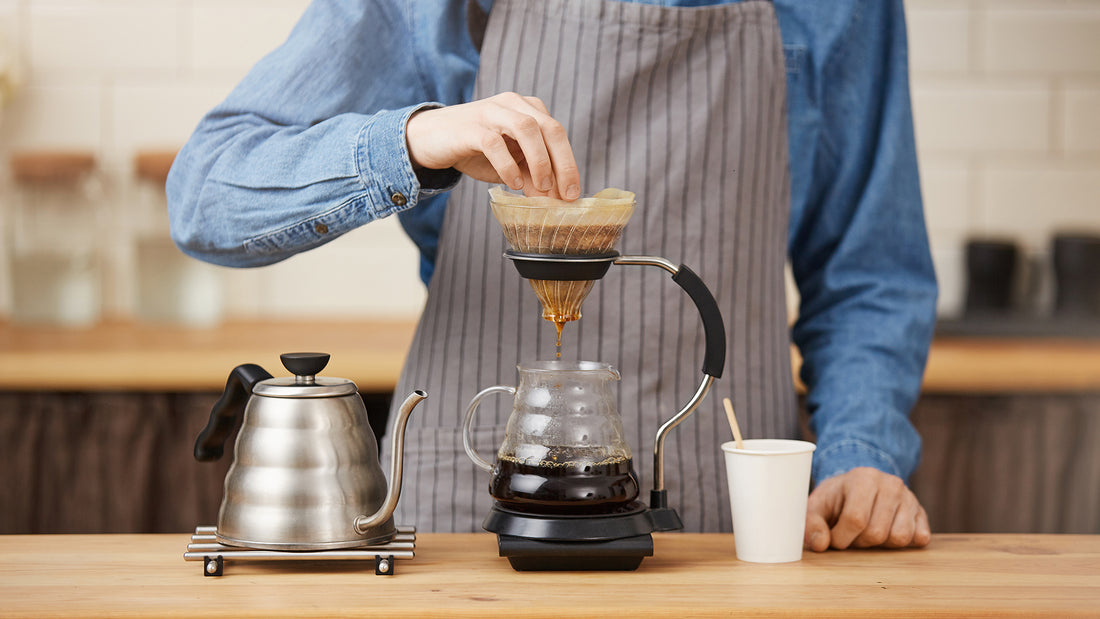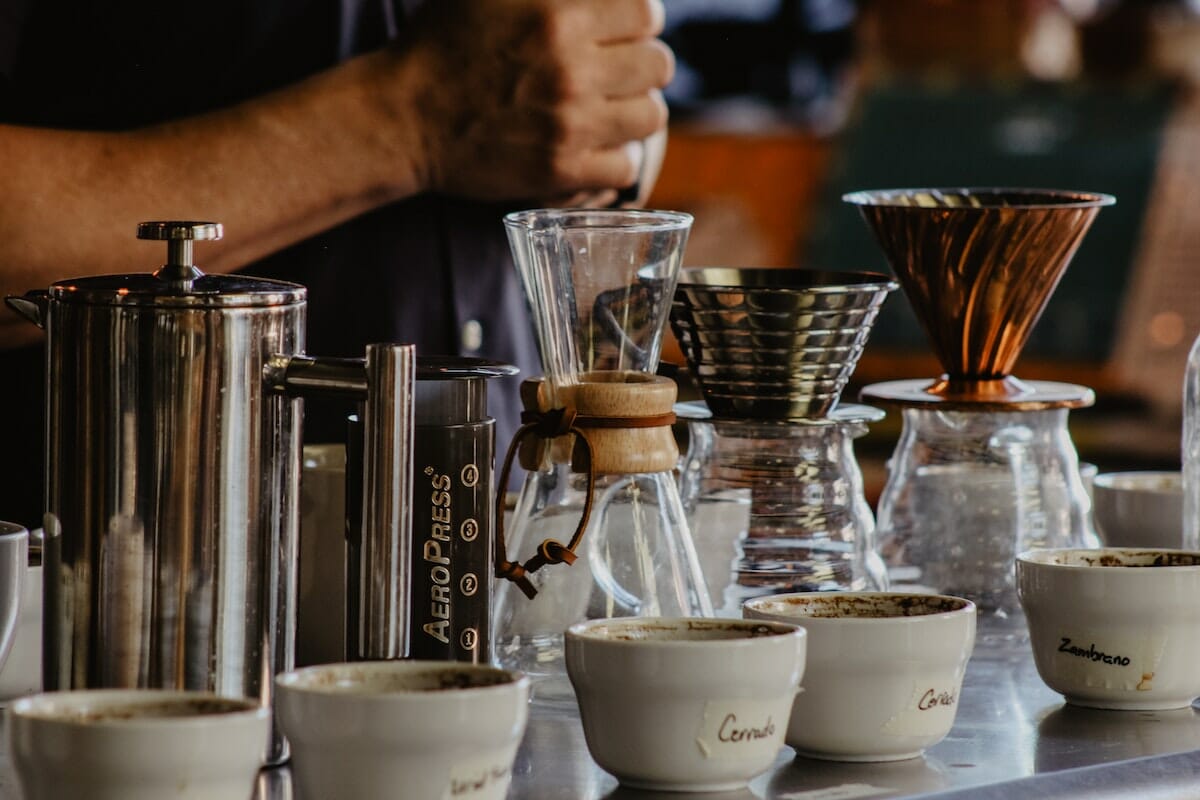The Science Behind Coffee Brewing: Just How Temperature and Time Affect Your Drink
Understanding the science behind coffee developing exposes that temperature and time are not simple variables yet crucial aspects that determine the beverage's taste profile and total top quality. As we discover the subtleties of these aspects, the inquiry arises: exactly how can one efficiently equilibrium temperature and time to accomplish that best brew?
The Chemistry of Coffee Extraction
The chemistry of coffee removal looks into the elaborate procedures that change raw coffee beans into the fragrant drink enjoyed worldwide. This improvement primarily entails the solubility of various substances existing in the beans, which are affected by elements such as grind dimension, water top quality, and the brewing method utilized.
Throughout the developing procedure, hot water works as a solvent, removing soluble compounds, consisting of high levels of caffeine, lipids, acids, and sugars, from the coffee premises. Each substance contributes to the taste profile, scent, and body of the final beverage. For instance, acids are accountable for tangy and brilliant notes, while oils add to a rich mouthfeel.
The initial phases of brewing remove acids and sugars, leading to an enjoyable level of acidity, while long term extraction can lead to anger due to over-extraction of unwanted compounds. Understanding these chemical interactions is important for enhancing developing methods, as the equilibrium between extraction time and water temperature level can considerably influence the total top quality of the coffee.
Ideal Developing Temperatures
Locating the right developing temperature is crucial for opening the full capacity of coffee tastes and scents - coffee brewing methods. Research study shows that the ideal variety for developing coffee exists between 195 ° F to 205 ° F(90 ° C to 96 ° C) Within this variety, the extraction process effectively dissolves the preferable soluble compounds in coffee beans, causing a balanced and savory cup
Brewing at lower temperature levels, such as below 195 ° F(90 ° C ), may cause under-extraction, yielding an acidic and weak brew with low-key tastes. On the other hand, brewing at temperature levels going beyond 205 ° F(96 ° C) can cause over-extraction, generating a extreme and bitter preference due to the too much dissolution of unfavorable compounds, such as tannins.
Moreover, the ideal brewing temperature can differ relying on the coffee bean kind and roast level. Lighter roasts frequently benefit from somewhat greater temperature levels to improve their intricate flavor profiles, while darker roasts might be much better matched to reduced temperatures to alleviate bitterness.
Ultimately, preserving precision in developing temperatures is important for accomplishing an unified equilibrium of tastes, making certain that every mug of coffee supplies a gratifying sensory experience.
Impact of Brewing Time
Brewing time plays an essential function in determining the taste account and general high quality of coffee. The extraction procedure, which affects the taste, aroma, and body of the beverage, is largely depending on how much time the coffee premises touch with water. Shorter developing times can result in under-extraction, resulting in a sour or weak taste, as inadequate soluble compounds are liquified. Conversely, prolonged brewing can bring about over-extraction, where unfavorable compounds are released, causing an astringent or bitter preference.
Ideal developing time differs depending upon the approach utilized and the grind size of the coffee. A French press usually calls for about four minutes, while coffee extraction is usually completed within 25 to 30 secs. It is vital to calibrate developing time in conjunction with various other variables, such as water temperature and coffee-to-water proportion, to attain the wanted flavor profile.
Comprehending the impact of brewing time allows coffee lovers to improve their brewing methods, eventually enhancing the sensory experience of their cup (coffee brewing methods). With cautious focus to this variable, one can unlock the full potential of the coffee, exposing its special features and subtleties
Brewing Methods and Their Results

For example, approaches like French press and chilly mixture permit for a much longer steeping time, resulting in a fuller body and robust flavor due to raised removal of oils and soluble solids. Conversely, espresso brewing uses high stress and a much shorter removal time, generating a focused shot that stresses extreme flavors and a rich crema.
Pour-over strategies, like this such as Chemex or V60, supply an even more controlled removal procedure, permitting the maker to manipulate flow rate and water distribution, which can enhance illumination and clarity. Meanwhile, percolation approaches cycle water via the coffee premises multiple times, leading to a more powerful, commonly bitter taste.
Finally, using paper filters versus metal filters can likewise influence the final preference; paper filters usually yield a cleaner mug by trapping oils and fine particles, while steel filters allow even more oils to travel through, adding to a fuller mouthfeel - coffee brewing methods. Recognizing these subtleties can elevate the coffee experience considerably
Tips for Improving Your Brew
A well-executed mixture can transform even the most basic coffee into an amazing experience. To accomplish this, attention to information is crucial. Begin with high-grade, freshly baked beans, as their flavor account diminishes with time. Grind the beans right before making to optimize quality, guaranteeing the grind size matches your brewing method-- coarser for French press and finer for coffee.
Water top quality plays an important duty; usage filteringed system water totally free from contaminations. The ideal brewing temperature level ranges in between 195 ° F and 205 ° F(90 ° C to 96 ° C ) Too warm can scorch the coffee, while too amazing might under-extract flavors.
Timing is just as important. For immersion techniques, steeping for three to five minutes is ideal, whereas drip approaches commonly take around five minutes. Try out brew times to find your favored stamina.

Final Thought
In summary, the elaborate relationship between temperature level and time is vital in the coffee developing procedure. Understanding these scientific concepts encourages people to improve their developing techniques, inevitably leading to an extra well balanced and enjoyable coffee experience.
Understanding the scientific research behind coffee developing exposes that temperature level and time are not simple variables yet crucial aspects that determine the beverage's flavor account and overall top quality. Recognizing these chemical interactions is critical for enhancing developing techniques, as the equilibrium in between extraction time and water temperature can dramatically affect the total quality of the coffee.Developing time plays a crucial role in determining the taste account and general high quality of coffee. By concentrating on these my link elements-- bean quality, grind dimension, water temperature, soaking time, and ratio-- you can boost your coffee developing process, resulting article source in a consistently superior mug.
In recap, the intricate connection in between temperature level and time is vital in the coffee developing procedure.